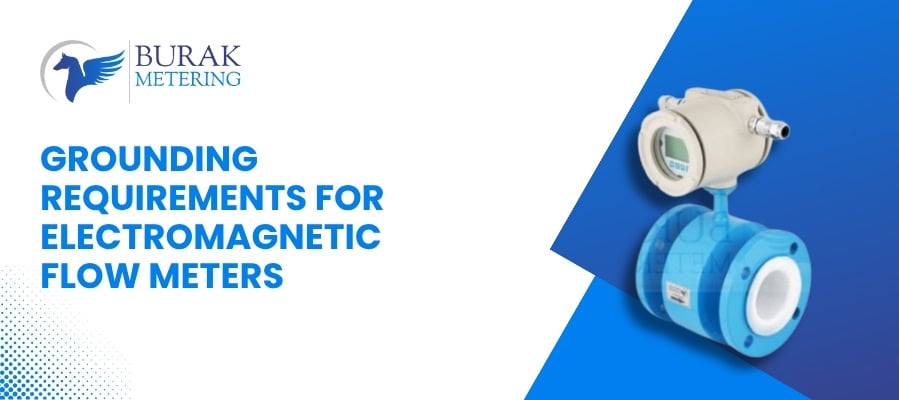 Phone
Phone

Electromagnetic flow meters (magmeters) measure conductive fluid flow using Faraday’s. The induced voltage is very weak (a few millivolts). Any stray electrical noise or potential difference can distort that signal.
Grounding provides a stable reference potential and a path for unwanted currents, which helps maintain accurate measurement.
This article explains the EM flowmeters' grounding needs, grounding methods, pitfalls, and best practices. Also see related guides on what are electromagnetic flow meters, installation best practices, working principle, and advantages & disadvantages.
Which method you choose depends on pipe material, lining, process fluid, and environment. Here are common methods:
If the pipe (or flange) is conductive and well earthed, and there is continuous metal-to-metal contact, then the flow meter may not require additional grounding rings. The meter body and electrodes connect electrically to the pipe, forming the path.
However, this works only if:
If any insulation breaks the continuity, you must add another ground method.
These are metal rings installed on both ends of the meter, between flanges. They make direct contact with the fluid and connect via a conductor to earth. These rings “tap” the fluid to provide the reference.
Grounding rings are almost mandatory when the pipe is non-metallic, lined, or coated.
Instead of rings, you may insert a third electrode in contact with the fluid (beside the two measurement electrodes). This electrode connects to earth via a conductor. It is useful when rings are impractical or too expensive (especially for exotic materials).
One caveat: small potential differences (e.g., 0.2 V) may cause electrolytic damage to the electrode over time.
Some modern converter designs float the input amplifier and generate an internal reference potential that matches the fluid potential. This method avoids direct equalizing currents and overcomes some challenges of external grounding.
This method is ideal when traditional grounding methods are problematic, e.g. lined pipes, cathodic protection, or highly corrosive fluids.
| Problem | Likely Cause | Remedy |
|---|---|---|
| Unstable or drifting reading | Poor or missing functional ground | Add grounding ring or electrode |
| High noise in signal | Ground loop or shared ground | Isolate the meter’s ground path |
| Electrode corrosion | Mismatch of materials or electrolytic currents | Use same materials, inspect electrode, switch method |
| Ground resistance too high | Long or thin ground conductor or poor contact | Shorten, enlarge, improve contact |
| Interference from cathodic protection system | Tangled grounding between systems | Separate the grounding for meter, use isolation |
Some engineers question whether large flange bolts suffice as a ground. The bolts may not touch the fluid or internal conductive path, so they are not reliable as the only grounding path.
Grounding is critical for electromagnetic flow meters because the induced signal is weak and vulnerable to interference. You need both protective ground (for safety) and functional ground (for measurement accuracy). Depending on pipe material, lining, and environment, you may choose to rely on metal piping, grounding rings, electrodes, or virtual grounding.
Always keep the ground path short, low impedance, and isolated from noisy equipment. Inspect connections routinely. Use shielding, twisted cables, and best practices. Follow local electrical standards. A sound grounding design can prevent most measurement errors and extend meter life.
If you want a reliable electromagnetic flow meter in Mumbai, Burak is your partner. As a top gas flowmeter manufacturer in India, we combine deep engineering know-how with high-quality manufacturing. We test meters under real conditions to guarantee accuracy, stability, and long life. Choose Burak to benefit from turnkey support, prompt service, and trusted performance in demanding applications.
Contact us for your requirements.